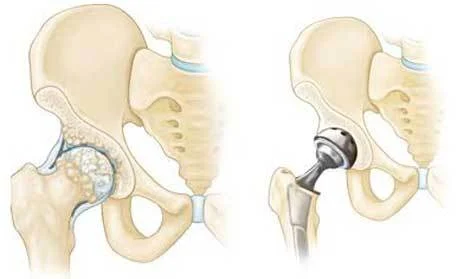Total hip replacement is a medical procedure wherein a damaged hip joint is replaced with an artificial one. While this surgery has high success rates, the journey to full recovery is gradual and requires understanding, patience, and following medical advice meticulously. This guide will take you through the recovery process week by week.
Week 1: Immediate Post-Operative Period
Hospital Stay: Most patients remain in the hospital for a couple of days post-surgery.
- Mobility: You’ll be encouraged to move the next day using a walker or crutches.
- Pain Management: Pain is a natural part of the healing process. Regular pain relief medications will be administered.
- Physiotherapy: Initial sessions will focus on gentle movements to prevent stiffness.
Week 2: Settling at Home
Home Preparation: Ensure your home is prepared for your return, with essentials within easy reach.
- Continued Physiotherapy: You’ll begin more structured physiotherapy sessions to regain hip function.
- Limited Activity: Refrain from strenuous activities. Frequent short walks are encouraged.
Week 3-4: Gaining Independence
Gradual Strength Building: As the weeks progress, you’ll notice increased strength and decreased reliance on mobility aids.
- Extended Physiotherapy: Exercises will become more challenging to restore joint flexibility.
- Monitoring: Regular check-ins with your surgeon will monitor your healing progress.
Week 5-6: Return to Daily Activities
Increasing Mobility: By now, you should be walking more comfortably, with minimal or no assistance.
- Driving: With your surgeon’s approval, you may start driving.
- Physical Activities: Introduce low-impact exercises like swimming or cycling.
Week 7-8: Further Strength and Flexibility
Advanced Physiotherapy: Exercises will be more demanding to ensure the hip joint regains its full range.
- Return to Work: Depending on your job nature, you might be able to return to work, especially if it’s desk-based.
- Minimize Swelling: Continue to elevate the leg and apply ice as needed.
Week 9-12: Approaching Full Recovery
Near-Normal Routine: You’ll find yourself returning to most of your pre-surgery activities.
- Regular Exercises: Focus on strengthening the hip and surrounding muscles.
- Follow-up: A critical evaluation with your orthopedic surgeon to assess the joint’s functionality.
Beyond 12 Weeks: Maintenance and Care
Consistent Exercise: Continue exercises to maintain hip strength and flexibility.
- Monitor for Complications: Be vigilant for signs of complications such as increased pain or infections.
- Lifestyle Adjustments: Consider incorporating joint-friendly activities into your routine, like yoga or Pilates.
In Conclusion
Recovering from a total hip replacement is a step-by-step journey. Each week brings its challenges and milestones. With dedication to rehabilitation and adherence to medical guidelines, most individuals can expect a significant improvement in mobility and quality of life.













Comments